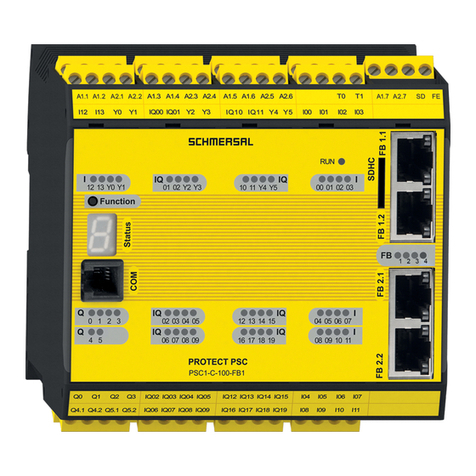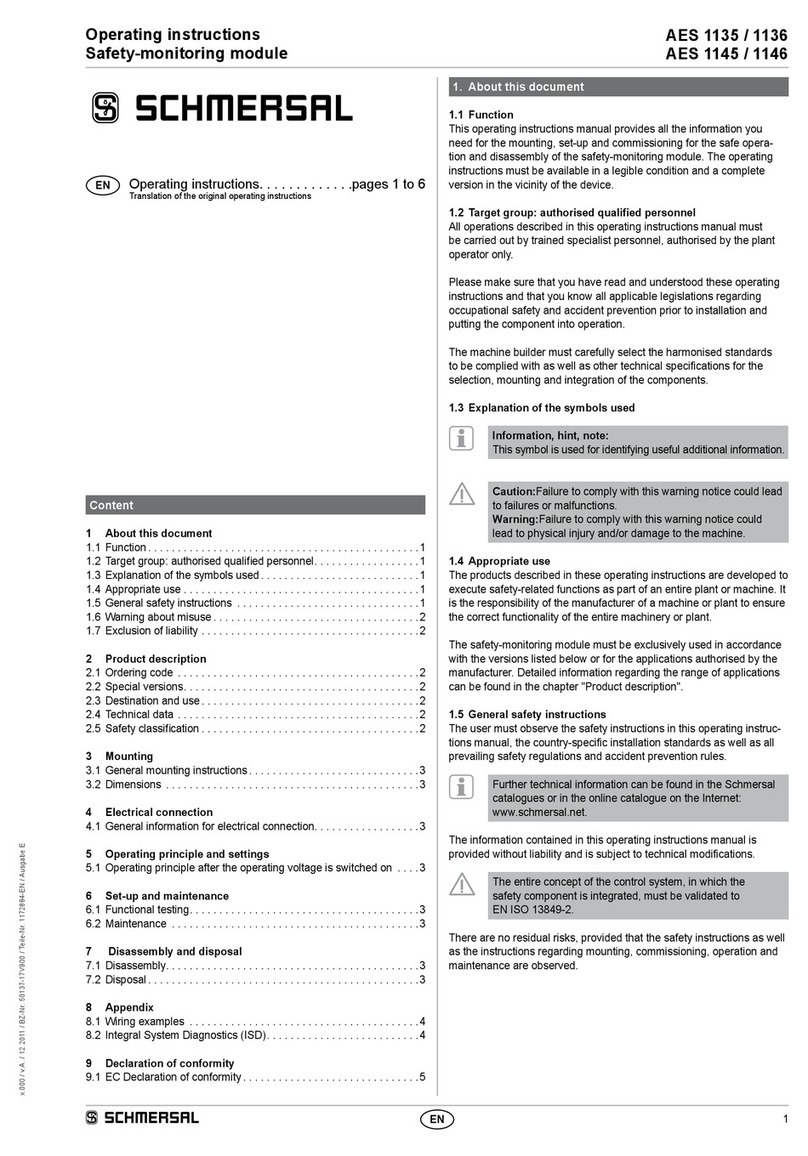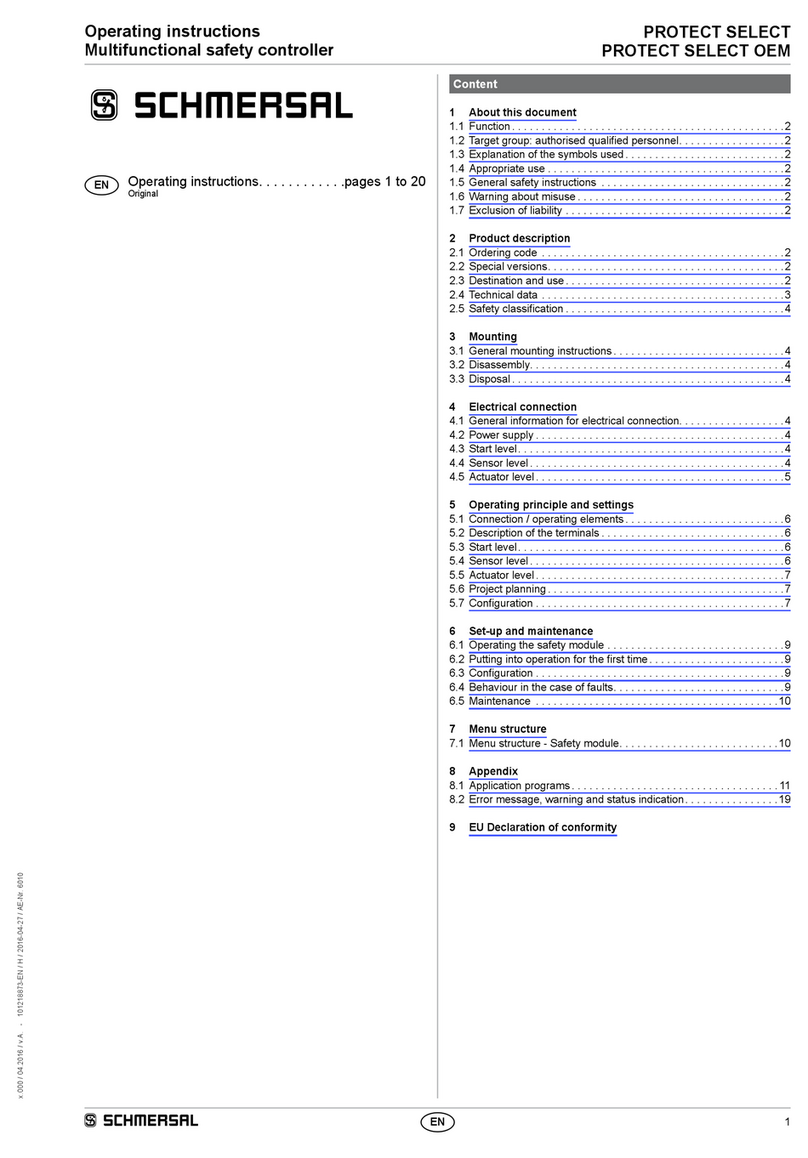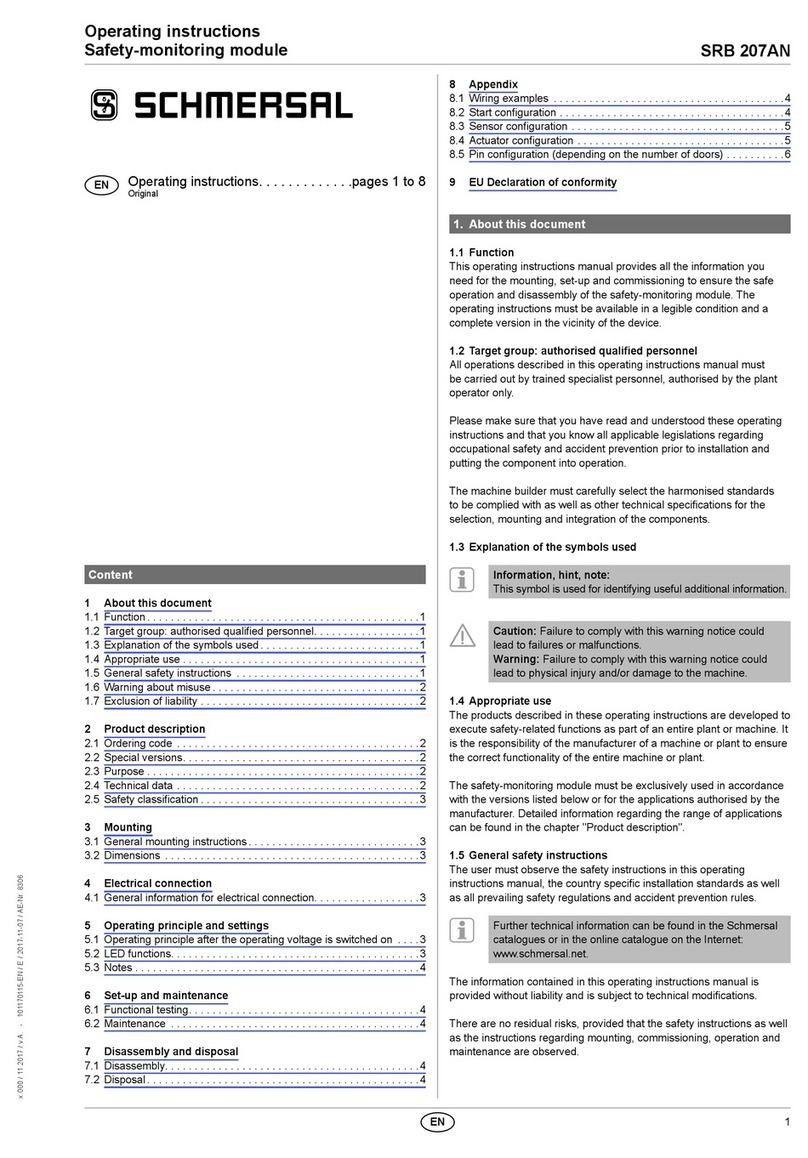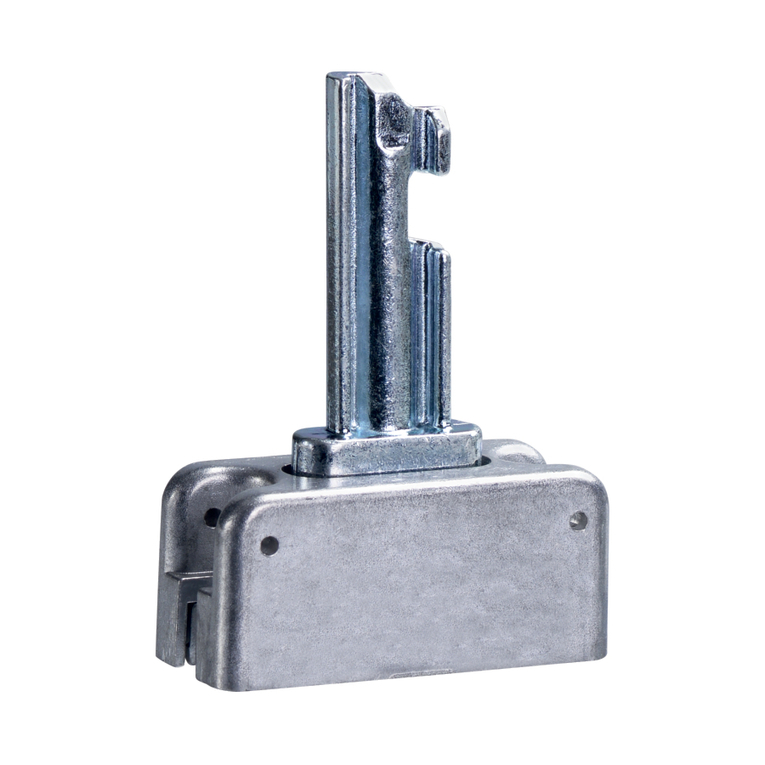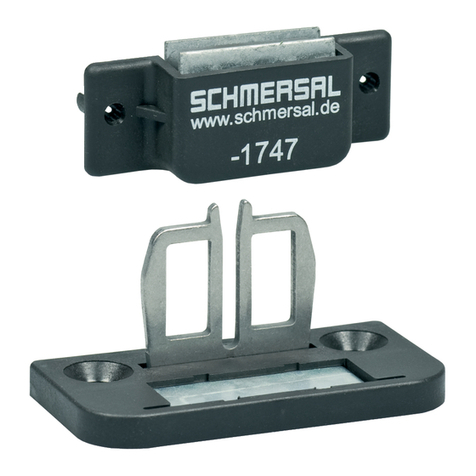
3
AZM 161 I
Operating instructions
Solenoid interlock
EN
Emergency exit
(Fitting and actuation only from within the hazardous area)
To activate the emergency exit of the T version in case of an emergency,
the orange lever must be turned to the stop in direction marked by
the arrow. The emergency exit function of the TD and TU versions is
activated by pressing the red pushbutton.
In this position, the safety guard can be opened. The blocking condition
is cancelled by turning the lever in opposite direction or by pulling back
the pushbutton. In unlocked position, the safety guard is protected
against unintentional closing.
Lateral emergency exit
(ordering suffix -T)
Emergency exit on the
cover side or on the rear side
(ordering suffix -TD/-TU)
The user must evaluate and design the safety chain in
accordance with the relevant standards and the required
safety level.
The entire concept of the control system, in which the safety
component is integrated, must be validated to the relevant
standards.
2.4 Technical data
Standards: IEC 60947-5-1, ISO 14119, BG-GS-ET-19
Enclosure: glass-fibre reinforced thermo-
plastic, self-extinguishing
Actuator and locking bolt: stainless steel 1.4301
Contact material: Silver
Coding level according to ISO 14119: high
Protection class: IP67
Contact type: Change-over contact with double break type Zb,
with galvanically separated contact bridges
Switching system:
A
acc. IEC 60947-5-1 slow action,
NC contact with positive break
Positive break travel: 10 mm
Positive break force: 10 N for each NC contact fitted
Connection: screw terminals or cage
clamps or connector
Cable type: flexible
Cable section: min. 0.25 mm², max. 1.5 mm²
(including conductor ferrules)
Cable entry: 4 x M16 x 1.5
Holding force Fmax:2000 N
Latching force: 30 N for ordering suffix R
Actuating speed: max. 2 m/s
Actuating frequency: max. 1000 operations/h
Mechanical life: > 1 million operations
Ambient temperature: –25 °C … +60 °C
Electrical data:
Utilisation category: AC-15, DC-13
Rated operating current/voltage Ie/Ue:
- CC, SK, ST 4 pole: 4 A / 230 VAC
2.5 A / 24 VDC
- ST 8 pole: 2 A / 24 VDC
Rated impulse withstand voltage Uimp:
- CC, SK, ST 4 pole: 4 kV
- ST 8 pole: 0.8 kV
Rated insulation voltage Ui:
- CC, SK, ST 4 pole: 250 V
- ST 8 pole: 60 V
Thermal test current Ithe:
- CC, SK, ST 4 pole: 6 A
- ST 8 pole: 2 A
Rated control voltage Us:24 VAC / DC;
110 / 230 VAC
Magnet: 100% ED
Power consumption: max. 10 W
Max. fuse rating: 6 A gG D-fuse
Required rated short-circuit current: 1000 A
Tightening torque rating: 4.4 lb in.
2.5 Safety classification
Standards: ISO 13849-1
Envisaged structure:
- Basically: applicable up to Cat. 1 / PL c
- With 2-channel usage and
fault exclusion mechanism*: applicable up to Cat. 3 / PL d
with suitable logic unit
B10d (NC contact): 2,000,000
B10d (NO contact) at 10% ohmic contact load: 1,000,000
Service life: 20 years
* If a fault exclusion to the 1-channel mechanics is authorised.
TF
d
10d op op
op
n
(Determined values can vary depending on the application-specific
parameters hop, dop and tcycle as well as the load.)
If multiple safety components are wired in series, the Performance
Level to ISO 13849-1 will be reduced due to the restricted error
detection under certain circumstances.
3. Mounting
3.1 General mounting instructions
On delivery, the actuator is in inserted condition. For
power-to-unlock components, the actuator must be released
by means of the manual release. If the triangular key is
turned 180°, the locking bolt is pulled into the unlocking
position. The normal locking function is only restored after
the triangular key has been returned to its original position.
Three mounting holes are provided for fixing the enclosure. The
solenoid interlock is double insulated. The use of an earth wire is not
authorised. The solenoid interlock must not be used as an end stop.
Any mounting position. The mounting position however must be chosen so
that the ingress of dirt and soiling in the used opening is avoided. Unused
actuator openings must be sealed with slot sealing plugs.
The safety component and the actuator must be
permanently fitted to the safety guards and protected
against displacement by suitable measures (tamperproof
screws, gluing, drilling, pinning).
Please observe the remarks of the standards ISO 12100,
EN 953 and ISO 14119.


